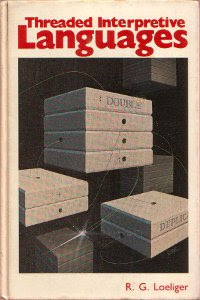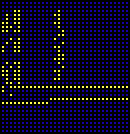Recently I started to look for an alternative programming font after spending far too many hours staring at Courier New. I needed to find a free fixed-width font that's easy on the eye and clearly distinguishes between similar characters, e.g. O01Il.
Here's a quick round up of the best alternatives I found. Which programming font are you using? Did I miss your favourite?
Default Monospace Fonts
First let's take a look at the default fonts. The examples show the font at 12 point with subpixel rendering switched off:
Consolas
Consolas is a monospace programming font created for Microsoft by Lucas de Groot and ships with Windows Vista / Windows 7. Has a slashed zero and designed to look best with ClearType enabled.
Courier New
Courier New is perhaps the most familiar monospace font having been introduced in 1992 with Windows 3.1. Courier New is a serifed font designed by Adrian Frutiger and lacks a slashed zero.
Lucida Console
Lucida Console designed by Charles Bigelow and Kris Holmes is the default font for Windows Notepad and also lacks a slashed zero.
Monaco
Monaco is a sans-serif monospace font designed by Susan Kare and Kris Holmes and ships with Mac OS X. Includes a slashed zero.
Alternative Monospace Fonts
While some of the default fonts aren't too bad, we can do much better. Here are some great alternatives mostly designed with programmers in mind:
Anonymous Pro
Anonymous Pro is a programming font designed by Mark Simonson. The serifed font was influenced by Susan Lesch and David Lamkins' Anonymous 9. Very clear with plenty of white space and a slashed zero.
Bitstream Vera Sans Mono
Bitstream Vera Sans Mono is a sans-serif coding font designed by Jim Lyles from Bitstream. The zero is dotted and the bottom of the lower case l curls to the right.
DejaVu Sans Mono
DejaVu Sans Mono is extended from Bitstream Vera Sans Mono and supports a wider selection of characters. The clean sans-serif font ships with a number of Linux distributions.
Dina
Dina is a sans-serif programming font created by Jørgen Ibsen and is available in 8, 9 or 10 point. Has a slashed zero.
Droid Sans Mono
Droid Sans Mono was designed by Steve Matteson of Ascender Corporation. The sans-serif font is clear but lacking a slashed or dotted zero.
Envy Code R
Envy Code R is a clean sans-serif programming font designed by Damien Guard and includes a slashed zero.
Inconsolata
Inconsolata is a monospace programming font created by Raph Levien and inspired in part by Consolas. Has a slashed zero.
Monofur
Monofur is a quirky monospace font created by Tobias Benjamin Köhler. Includes a dotted zero and a curl on the lower case l.
Proggy Clean
Proggy Clean was designed by Tristan Grimmer and is available with either a dotted or slashed zero. Several variants of the Proggy font are available.
Triskweline
Triskweline is a clear monospace font created by Henning Koch. Lacks a slashed zero and only available in 10 point.























